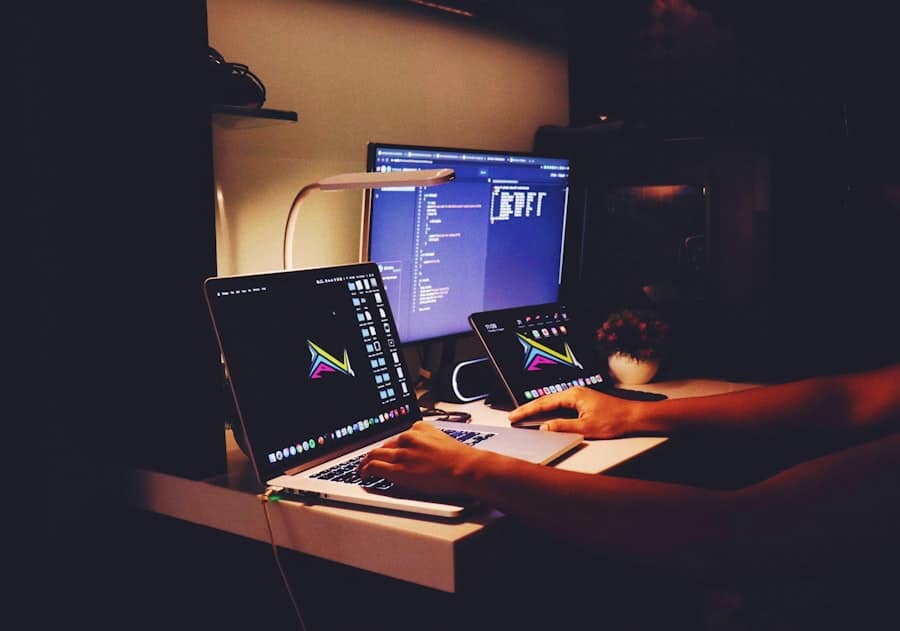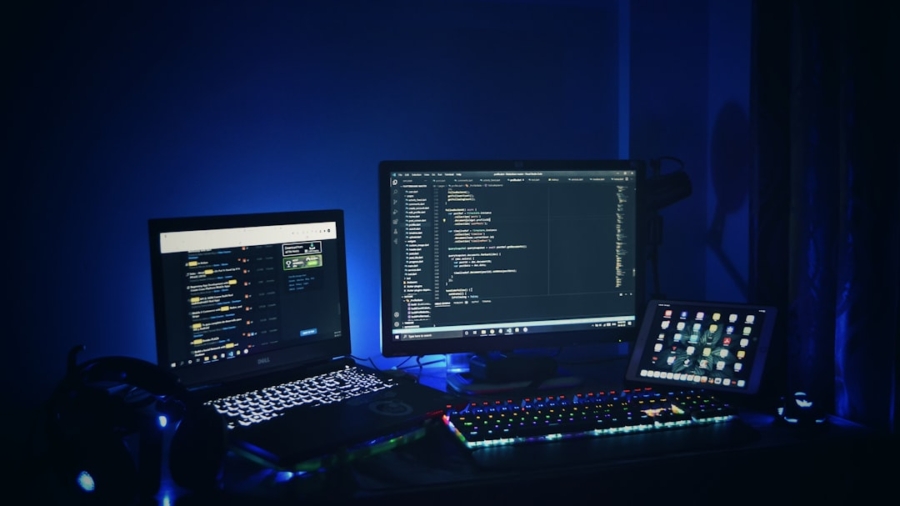Virtual Reality (VR) has emerged as a transformative technology across various sectors, and its application in military training exercises is particularly noteworthy. The military has long recognized the importance of realistic training environments to prepare personnel for the complexities of modern warfare. Traditional training methods, while effective, often fall short in replicating the dynamic and unpredictable nature of real combat scenarios.
VR technology offers a solution by immersing soldiers in lifelike simulations that can be tailored to specific missions, environments, and threats. This innovative approach not only enhances the realism of training but also allows for repeated practice without the logistical challenges and risks associated with live exercises. The integration of VR into military training exercises is not merely a trend; it represents a paradigm shift in how armed forces prepare their personnel.
By leveraging advanced graphics, haptic feedback, and interactive scenarios, VR can create environments that closely mimic real-world conditions. This capability is particularly valuable in preparing soldiers for urban warfare, counter-terrorism operations, and other complex scenarios where situational awareness and quick decision-making are critical. As militaries around the world seek to enhance their training methodologies, VR stands out as a powerful tool that can significantly improve readiness and effectiveness on the battlefield.
Key Takeaways
- VR applications in military training exercises offer a realistic and immersive training environment for soldiers to practice various scenarios and skills.
- The advantages of using VR in military training include cost-effectiveness, safety, adaptability to different terrains and scenarios, and the ability to provide immediate feedback to soldiers.
- A case study on the implementation of VR in military training exercises demonstrates the effectiveness of VR in improving soldier performance and preparedness.
- VR has a significant impact on soldier performance and preparedness by enhancing situational awareness, decision-making skills, and muscle memory.
- Challenges and limitations of using VR in military training include technical issues, potential for overreliance on VR, and the need for continuous updates and maintenance of VR systems.
- Future developments and potential for VR in military training include advancements in technology, integration with other training methods, and the use of VR for mental health and resilience training.
- Ethical considerations and concerns with VR in military training include the potential desensitization to violence, privacy issues, and the need for ethical guidelines and regulations.
- In conclusion, VR plays a crucial role in enhancing military training exercises by providing a safe, cost-effective, and realistic training environment for soldiers to improve their skills and preparedness.
The Advantages of Using VR in Military Training
One of the most significant advantages of using VR in military training is the ability to conduct realistic simulations without the associated risks of live training exercises. In traditional training environments, soldiers may face physical dangers, logistical challenges, and resource constraints. VR eliminates many of these issues by providing a safe space where personnel can engage in high-stakes scenarios without the fear of injury or loss of equipment.
This safety aspect allows for more aggressive training regimens, where soldiers can push their limits and learn from mistakes without real-world consequences. Moreover, VR training can be customized to meet the specific needs of different units or missions. For instance, a unit preparing for an urban combat operation can be immersed in a virtual cityscape that reflects the actual terrain they will encounter.
This level of specificity ensures that soldiers are not only familiar with the tactics required for their mission but also with the unique challenges posed by their operational environment. Additionally, VR allows for the rapid iteration of training scenarios, enabling instructors to modify conditions based on evolving threats or lessons learned from previous exercises. This adaptability is crucial in an era where military operations are increasingly complex and multifaceted.
Case Study: Implementation of VR in Military Training Exercises

A notable example of VR implementation in military training is the U.S. Army’s Synthetic Training Environment (STE). This initiative aims to create a unified training platform that integrates various simulation technologies, including VR, to provide soldiers with a comprehensive training experience.
The STE allows soldiers to train in a virtual environment that replicates real-world conditions across different terrains and scenarios. By utilizing advanced graphics and AI-driven simulations, the STE enables units to conduct collective training exercises that enhance teamwork and coordination. In one specific exercise, soldiers from the 1st Infantry Division participated in a VR training session designed to prepare them for an upcoming deployment.
The exercise involved navigating through a virtual city while responding to simulated threats such as ambushes and improvised explosive devices (IEDs). Participants reported that the immersive nature of the VR environment significantly improved their situational awareness and decision-making skills. Instructors noted that soldiers were able to practice tactics repeatedly, refining their responses to various challenges without the logistical burden of setting up live-fire exercises.
This case study illustrates how VR can effectively bridge the gap between theoretical knowledge and practical application in military training.
The Impact of VR on Soldier Performance and Preparedness
The impact of VR on soldier performance is profound, as it fosters an environment conducive to learning and skill development. Research has shown that immersive training experiences can enhance cognitive retention and improve muscle memory, both of which are critical for effective performance in high-pressure situations. Soldiers who engage in VR training often report increased confidence in their abilities, as they have had the opportunity to practice and refine their skills in a controlled yet realistic setting.
Furthermore, VR training can facilitate better teamwork and communication among soldiers. In many military operations, success hinges on effective collaboration between team members. VR simulations allow units to practice coordinated maneuvers and develop strategies collectively, reinforcing the importance of communication under stress.
The ability to rehearse these interactions in a virtual environment prepares soldiers for the complexities of real-world operations, where split-second decisions can have life-or-death consequences.
Challenges and Limitations of Using VR in Military Training
Despite its numerous advantages, the integration of VR into military training is not without challenges. One significant limitation is the potential for technological issues that can disrupt training sessions. Hardware malfunctions or software glitches can lead to frustration among trainees and instructors alike, undermining the effectiveness of the exercise.
Another challenge lies in ensuring that VR simulations accurately reflect real-world conditions. While technology has advanced significantly, there remains a risk that virtual environments may not fully capture the complexities of actual combat scenarios.
For instance, factors such as environmental variables—like weather conditions or terrain variations—may not be adequately represented in a virtual setting. This discrepancy could lead to gaps in training effectiveness if soldiers are not adequately prepared for the unpredictability of real-life situations.
Future Developments and Potential for VR in Military Training

Looking ahead, the potential for further developments in VR technology within military training is vast. As advancements continue in areas such as artificial intelligence (AI) and machine learning, future VR simulations could become even more sophisticated and responsive to user actions. For example, AI-driven characters within simulations could adapt their behavior based on soldiers’ decisions, creating a more dynamic and challenging training environment that closely mirrors real combat scenarios.
Moreover, the integration of augmented reality (AR) with VR could enhance training experiences even further. By overlaying digital information onto real-world environments, AR could provide soldiers with real-time data during live exercises or field operations. This combination of technologies could lead to hybrid training solutions that maximize both immersion and practical application, ultimately improving soldier preparedness for diverse operational contexts.
Ethical Considerations and Concerns with VR in Military Training
The use of VR in military training also raises important ethical considerations that must be addressed as this technology becomes more prevalent. One concern is related to desensitization; repeated exposure to violent scenarios within a virtual environment may lead some individuals to become numb to the realities of combat. This desensitization could have implications for soldiers’ mental health and their ability to process traumatic experiences during actual deployments.
Additionally, there are questions surrounding data privacy and security when utilizing advanced technologies like VR. Training exercises often involve sensitive information regarding tactics and strategies that could be exploited if not adequately protected. Ensuring that data collected during VR training sessions is secure from potential breaches is paramount to maintaining operational integrity.
The Role of VR in Enhancing Military Training Exercises
As militaries around the globe continue to explore innovative approaches to training, Virtual Reality stands out as a powerful tool capable of enhancing preparedness and performance among soldiers. By providing immersive experiences that replicate real-world conditions, VR enables personnel to develop critical skills while minimizing risks associated with traditional training methods. While challenges remain regarding technology reliability and ethical implications, ongoing advancements promise to further refine these applications.
The future of military training will likely see an increased reliance on VR technologies as they evolve to meet the demands of modern warfare. As armed forces embrace these innovations, they will not only enhance their operational readiness but also ensure that soldiers are equipped with the skills necessary to navigate an increasingly complex battlefield landscape. The role of VR in military training is poised to grow significantly, shaping how future generations of service members prepare for their vital missions.
In the realm of technological advancements, virtual reality (VR) has emerged as a pivotal tool in various sectors, including military training exercises. The case study on VR applications in military training highlights how immersive simulations can enhance the preparedness and effectiveness of military personnel. This innovative use of VR is part of a broader trend in digital technology, which is also influencing other fields such as marketing. For instance, the article on Top Trends on Digital Marketing 2023 explores how digital innovations are reshaping marketing strategies, much like how VR is transforming military training. Both articles underscore the transformative power of technology in their respective domains, illustrating a shared trajectory towards more immersive and effective applications.
FAQs
What is VR?
VR stands for virtual reality, which is a computer-generated simulation of an environment that can be interacted with in a seemingly real or physical way by a person using special electronic equipment, such as a helmet with a screen inside or gloves fitted with sensors.
How is VR used in military training exercises?
VR is used in military training exercises to create realistic and immersive simulations of combat scenarios, vehicle operation, medical training, and other military-related activities. This allows soldiers to practice and improve their skills in a safe and controlled environment.
What are the benefits of using VR in military training exercises?
The benefits of using VR in military training exercises include cost savings, increased safety, the ability to simulate a wide range of scenarios, and the opportunity for soldiers to practice and improve their skills in a realistic and immersive environment.
What are some examples of VR applications in military training exercises?
Some examples of VR applications in military training exercises include simulating combat scenarios, vehicle operation, medical training, and virtual rehearsals for missions. VR can also be used for psychological training and to simulate the effects of stress and fatigue on soldiers.
Are there any limitations to using VR in military training exercises?
Some limitations to using VR in military training exercises include the initial cost of equipment and software, the need for specialized training to operate and maintain VR systems, and the potential for motion sickness or other adverse effects in some users. Additionally, VR simulations may not fully replicate the complexities of real-world combat situations.

